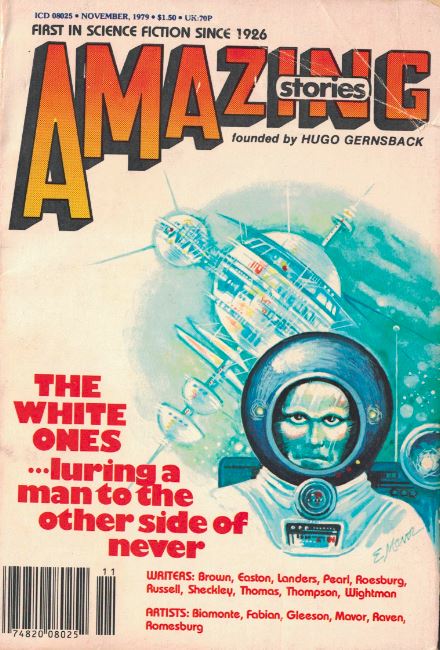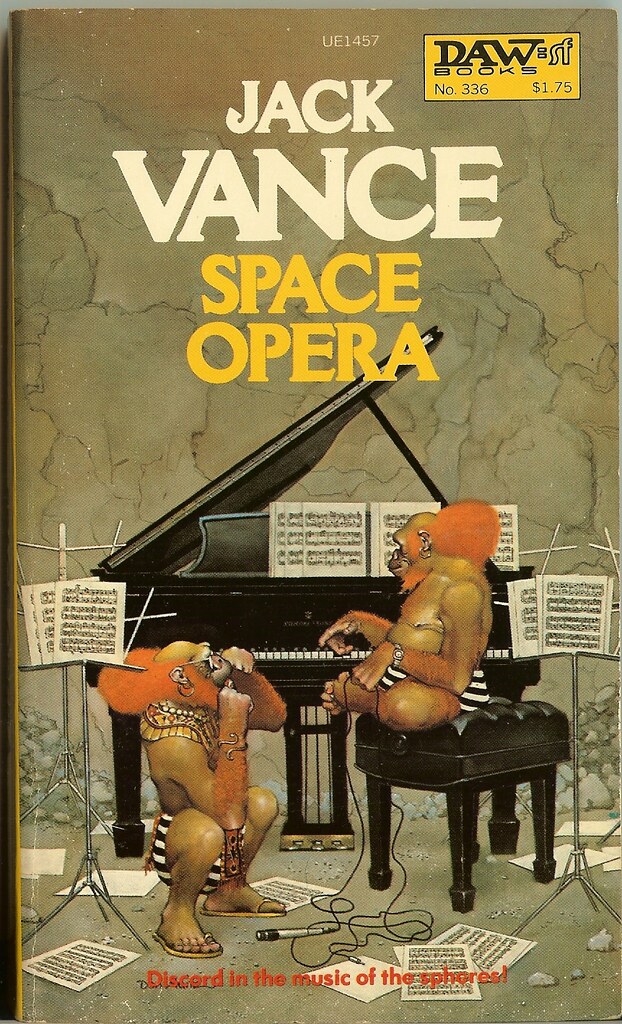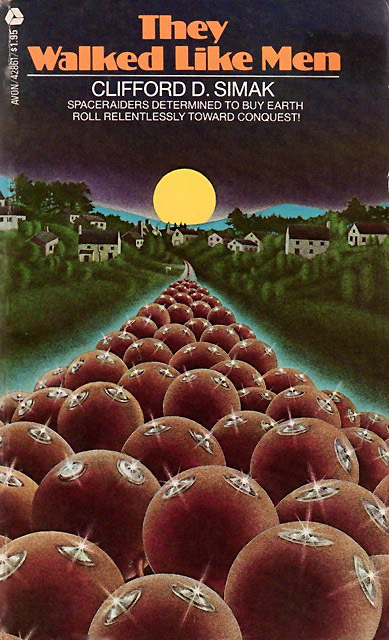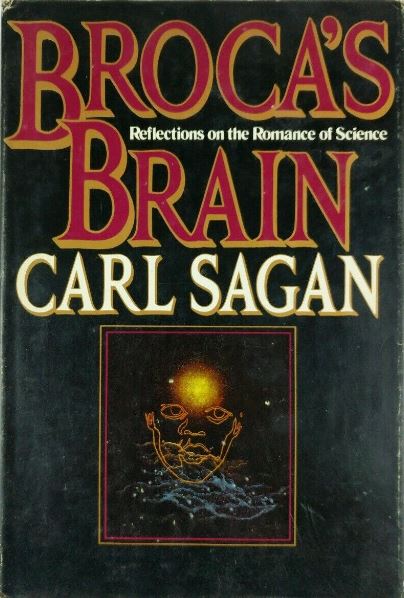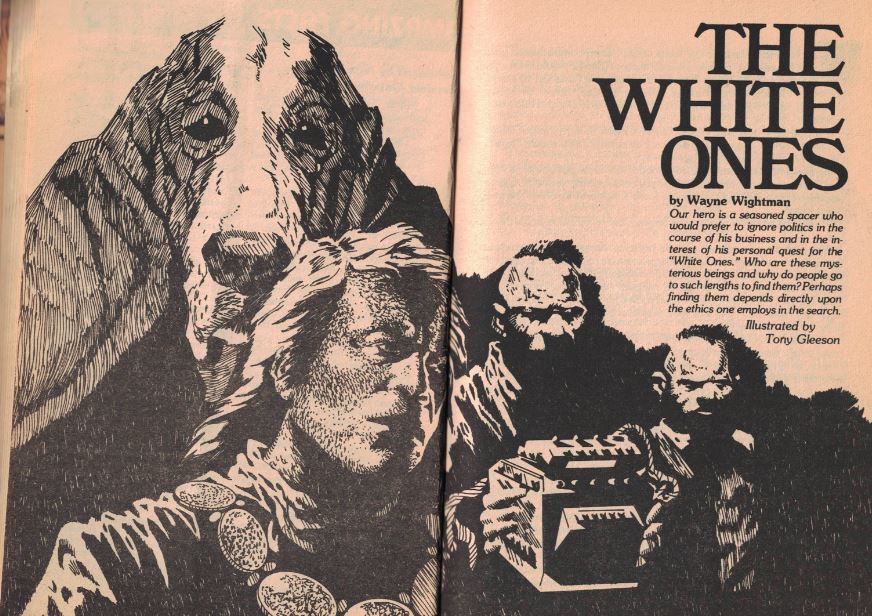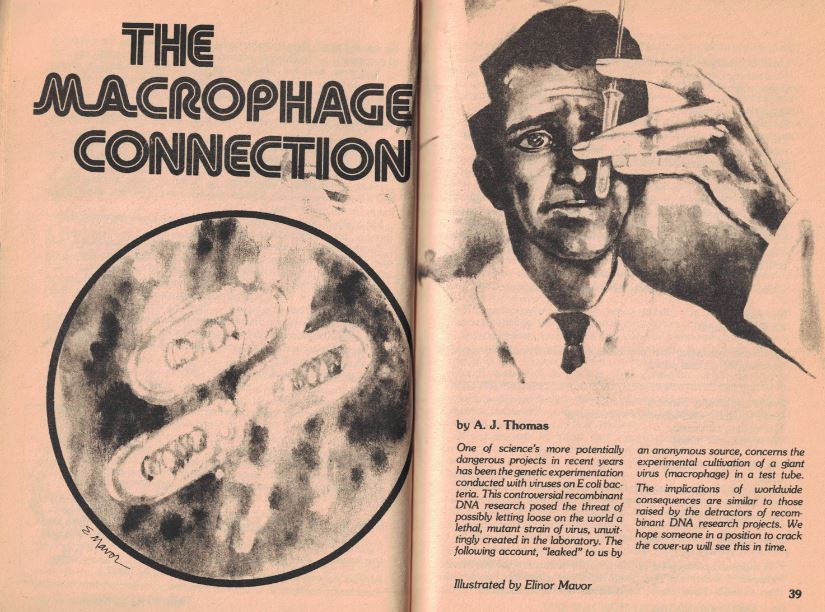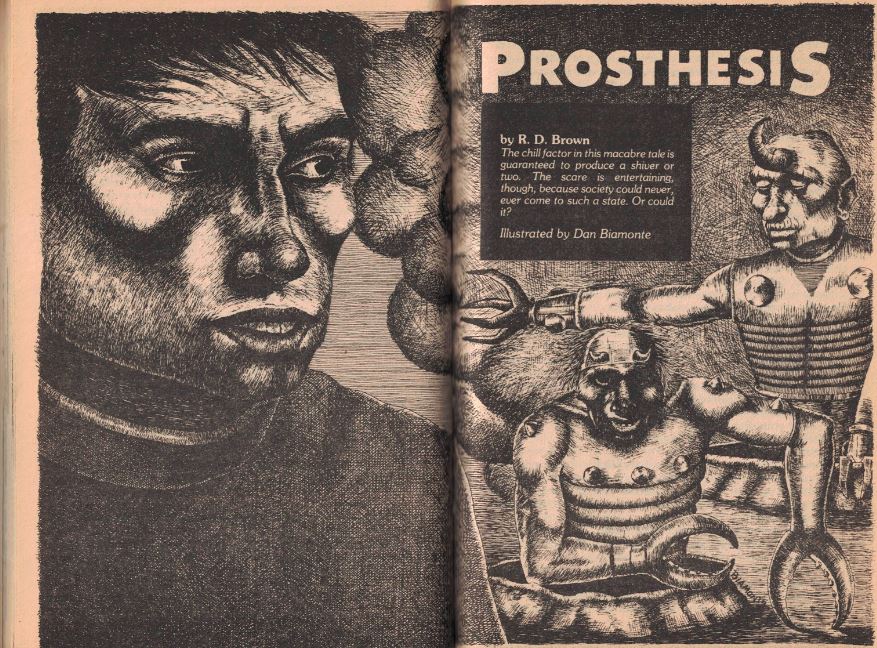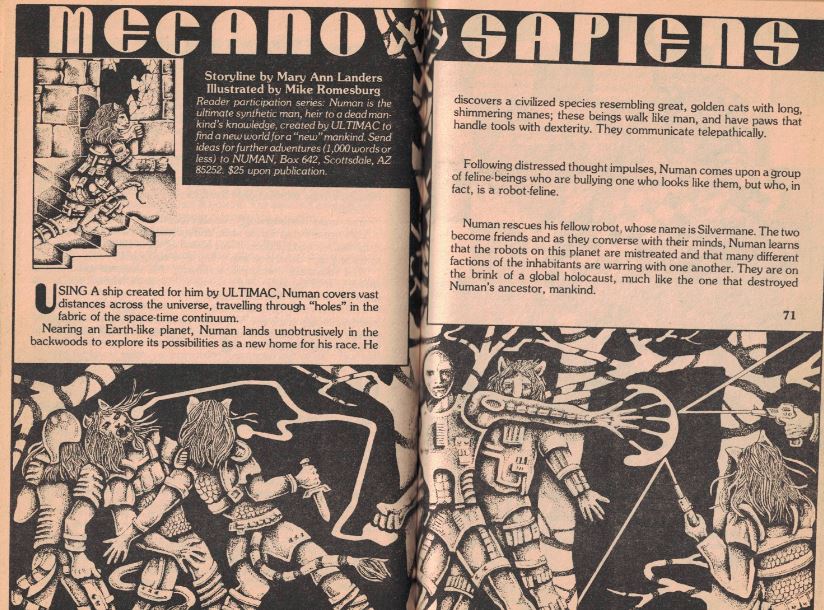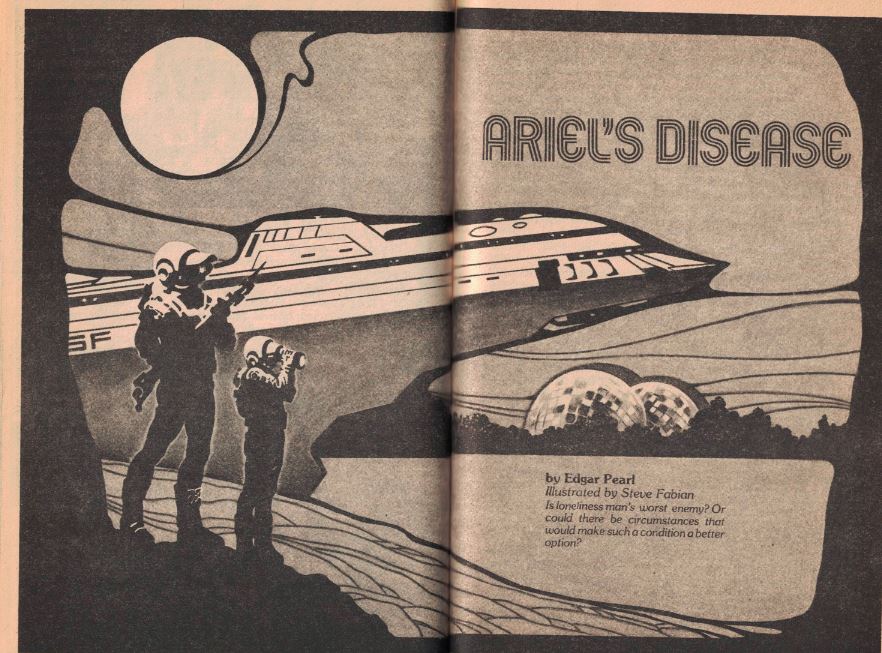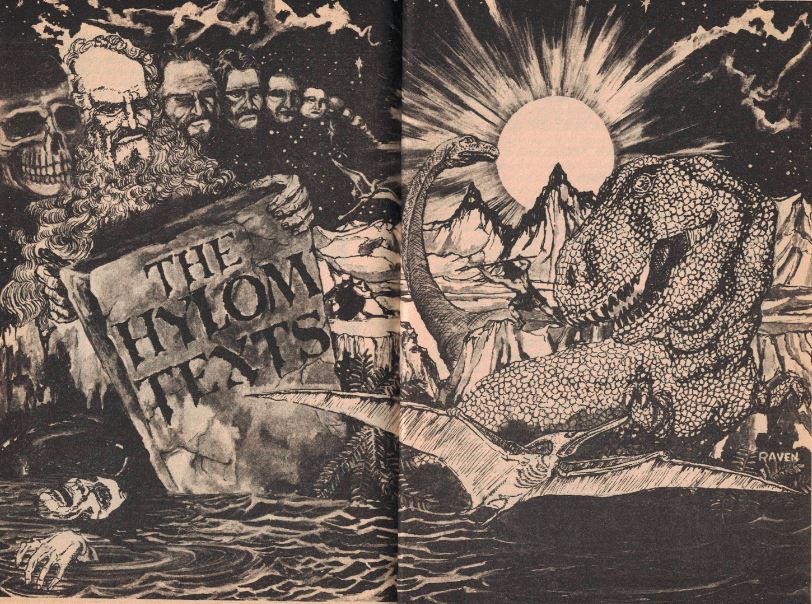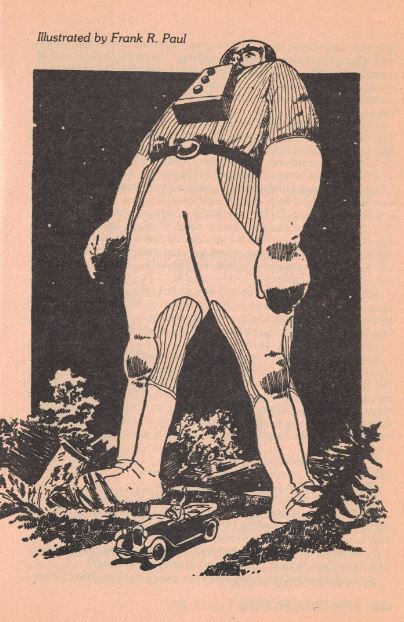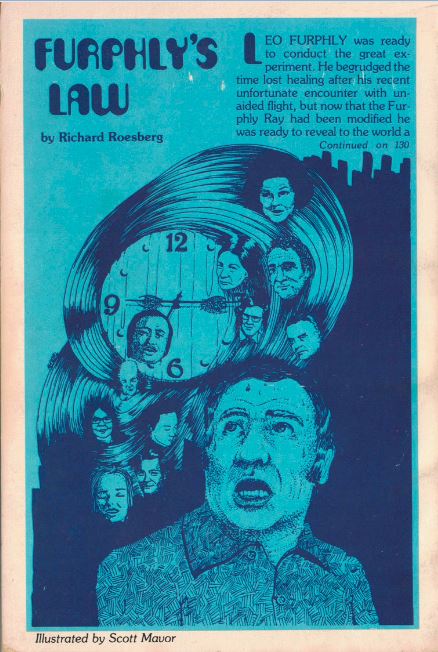Amazing Stories, November 1979: A Retro-Review
Cover by Elinor Mavor
Coming in after Asimov’s, Amazing Stories is a svelte 130 pages. One thing that really stood out to me in this issue was that almost everyone in it was a novice writer — many of the stories were first sales. It isn’t the ‘theme’ of the magazine, or of this issue or anything, but it is a thing I noticed. There is something refreshing about a quality amateur story, a certain unpolished plunging-ahead that can sweep the reader along.
That said, there are some of the stories that are, honestly, not that good. Others have said it better, but if you had picked up this issue back in the day (or pretty much any day), and thought to yourself “Hell, I could do this!”, you’d be right.
Here’s a look at the contents.
Editorial, Countdown, by Omar Gohagen. Similar to Galileo, Amazing Stories touches on the people behind the fiction, in the form of responses to their acceptance letters. Ah, the joy of a sale! In some case, the joy of a first sale! And in at least one case, the joy of a first sale for a first story!
Omar Gohagen has a story of his own, in that ‘Omar’ was a pseudonym for Elinor Mavor, who edited both Amazing Stories and Fantastic from ’79 until late ’82 (and painted the cover for this issue).
Input, Letters to the Editor. When a woman named Alma Jo Williams wrote her letter to this magazine, do you think that she could have imagined that 40 years later I would google her kinda familiar name and have her obituary come up at the top of the list? We live in an age of wonder! Heartbreaking wonder!
The letters section also includes what appears to be someone answering a ‘help-wanted’ ad for Amazing Stories itself, a poem (was the writer paid for that?), and several letters applauding Amazing for thumbing its nose at the whole “New Wave” movement.
Book Reviews, Interstellar Connection. Tom Staicar hits the shelves!
Space Opera, by Jack Vance. On each planet, Dame Isabel is convinced the dull primitive cultures can be uplifted by the superior cultural achievements of Earth’s operatic masters. Things go awry.
Tomorrow and Beyond, Edited by Ian Summers. The pages seem ready to burst with color. The sense of wonder dormant in the most jaded SF fan will rise to life again after a few minutes spent with these paintings.
They Walked Like Men, by Clifford D. Simak. […] the book is a gripping novel first published in 1962. Simak manages to maintain the book’s tense mood from the first paragraph to the last, using just the right effect at the right moment.
Untouched by Human Hands, by Robert Sheckley. Not all the stories are outstanding, but each one has the Sheckley touch.
Broca’s Brain, Reflections the Romance of Science, by Carl Sagan. [the book] is a collection of speculations about science which deals with a variety of topics. Sagan’s enthusiasm for new ideas and his passion for the “joy of knowing” are present in full force. […] The scientist’s frank remarks about several subjects will probably inspire some angry rebuttals. […]His examples are such fields as ESP, astrology, the Van Daniken theories in Chariots of the Gods, and the Velikovsky theories in Worlds in Collision. [I remember my parents getting this book back in ’79 or ’80.]
Tom Staicar is just at the start of his critical career at this point, but he really gets the essays and review and nonfiction book career going and going strong until about ’83.
Fans, Prose & Cons, Fandom/Convention Column. After a quick set of definition of the kingdom/phylum/classes of conventions and ‘zines, the article delves into about a dozen fanzines, their particular flavor, and how you can buy them. Item one on the list? Locus! Back in the day when Locus was a fanzine! The only other ‘zine I recognizes is File 770. On the convention side, The 39th World SF Con was in Brighton, England, with GOHs Brian Aldiss, Fritz Lieber and Harry Bell. The 5th World Fantasy convention, with Frank Belknap Long, Stephen King, and Michael Whalen, going on in Pawtucket Rhode Island.
Amazing Fact, Science Column, by Alex Saunders. Sci-fi prophecies! Science fiction has often swung and missed in its prognostications, but it has sometimes knocked it out of the park. Satellites used by ships at sea? Predicted by Edward Everett Hale in 1869. Aerial warfare predicted by Jules Verne in 1886. Atomic bombs? 1895 by Robert Cromie. Hugo Gernsback made a number of correct guesses, including fluorescent lighting, hydroponics, metal foil, micro-film, plastics, radio networks, and synthetic fabrics.
Fiction, “The White Ones,” by Wayne Wightman, art by Tony Gleeson. Space Adventurer Saxon is on a quest to find the ‘White Ones’, near mythic godlike beings who meddle in the affairs of the various people of the galaxy. He’s collecting rubies to trade to the Dorgrid empire for their Efficiency Amplifier. But the reason the Dorgrid want the rubies is to use them in their lasers, which they are going to use to conquer and massacre the much more peaceful Shrifar.
This story was a bit too neat for me, the MC already has fascinating alien tech which he can use to outsmart the Dorgrid — but he could have done that anyway, and the Efficiency Amplifier pretty much reverses the second law of thermodynamics, which means the Dogrid don’t even need the rubies, they could have used the Amplifier to make any of their existing lasers blast the Shrifar to bits.
Using the Efficiency Amplifier to boost his ship into transwarp drive (or whatever), Saxon blasts himself outside of space and time he becomes one of the white ones.
Although his name isn’t super familiar to me, Wayne Wightman does seem to have a writing career that perhaps started with this story and continued into the 90s.
Fiction, “The Macrophage Connection,” by A.J. Thomas, with artwork by Elinor Mavor. A letter found in the ruins of an immunology lab and sent to Amazing Stories magazine as a veiled warning to the world frames this tale of recombinant DNA run amok!
Cory Jenkins, a surly yet thorough researcher has been making great strides in growing cells larger. But is he treading where man was not to go? Oh, hell yes!
There was not much left of Cory, except for his skeleton and his clothes. What remained lay in a puddle of decomposing fluids and liquefying tissue. He was covered with a semi-transparent film. The resemblance to an amniotic sac was uncanny. I began to walk over to the remains when the crunch of glass under my feet became audible. I looked at the floor and saw the remains some of the bottles. Two of them, uncorked, were still on the lab bench, a dry grayish film surrounding them. The remains of the other three bottles were all over the floor. The stench of rotting flesh assailed my nostrils.
The casual tone of the story is what makes it read smooth and quick, although there was a lot of technical jargon (and I think that Mr. Thomas didn’t understand that ‘phages’ are viruses, and they don’t get much bigger, and the thrust of the story was about giant cells, which are completely different).
Fiction, “Closest Kin,” by Thomas A. Easton, artwork by Elinor Mavor. This story was one of those weird just-so stories about lawyers trying to determine a dead guy’s heirs and, well, it was pretty crappy. Even at its short length the joke fell flat. At least I think it was a joke, but honestly I couldn’t tell.
That said, Easton’s career (which started in about ’74) continues to this day.
Prosthesis, by R.D. Brown, Illustrated by Dan Biamonte. There is a war on between genetically modified humans and cybernetically modified humans! Our MC has no modifications and is very proud of that, no matter the risks. Get your arm blown clean off? Get a prosthetic replacement! Plus, prosthetics are kind of ‘in’ nowadays, and, you know, if you already have synthetic lungs the next nerve-gas bomb won’t bother you a bit. Not a bit!
He’s done such a good job in supporting the war effort that he gets selected for Full Body Prosthesis, including ‘uploading’ (a term that hadn’t been invented or in use in ’79) his brain into electrogel. FBP has been a secret project for a while and Opperly is one of the first dozen or so to actually get it. His boss, Capra, was the first. And this leads to a problem during the leadup to FBP, he notices his boss is acting extremely weird:
“I know the answer,” Capra giggled, “But I won’t tell you.”
George looked up quickly. Capra’s face was a blank. Had he heard him right?
“I know many things,” Capra went on, “Many secret things. Everything has been arranged.”
“Huh?”
“Everything has been arranged. […] Your replacement is even now being sent to your freehold. Your wife will sign for it and it will be there when you get home.”
“Wait a minute. Are you going to operate on me at home?”
“Not necessary. Since you are being Totally Preplaced All that really has to be done is to transfer your brain contents, If you have any, into the unit’s. […] it is geared to your brain wave patterns. When you get home stand directly in front of it and push in on the i.d. plate. You will shed your corruptible body and put on celestial garb.”
The whole thing has him understandably horrified and because he is just a meat-sack in a gene mod/cyborg world, he gets captured by the bad guys (who are, in fact good guys, and all foreigners, which is kind of cool) and warned that the ineffective nerve gas they’ve been dropping on the city lately is only effective against electrogel brains.
George Orrley has no intention of turning the machine version of himself on when he gets home, but his wife is tired of him being behind the curve and she starts it up. A slow-motion chase ensues with the TPR Orrley trying to get close enough to do the whole brain-wave reading thing. Orrley manages to shoot it in the ID plate — the only potentially vulnerable spot on it, and thinking he’s deactivated it, makes the mistake of getting close to it, getting sucked into a permanently damaged FBP, which is itself outside and in the electrogel damaging gas. So both die. And that’s the story. It was one of those that had a few good ideas poorly executed overall.
Fiction “Mechano Sapiens,” a ‘reader participation’ series. And what do readers want? Cat-people, of course. Really poor writing, but I guess it might have been a fun experiment/series at the time.
Fiction, “Ariels’ Disease,” by Edgar Pearl, artwork by Steve Fabian. Benji is the last survivor of the Ariel-2 expedition and after burying his last companion, he realizes that The Man will only return to the planet when either they find a cure (which Benji doesn’t have the skill to do) or he dies, or they pick him up in 3 months.
For the first few days after that he stayed very near the base camp, wanting to be comfortable when the chills started racking is body one way, and the perspiration broke out and pulled his body the other. He kept a container next to his bed when he slept so as not to mess the floor when he threw up, though he laughed at himself, to, for caring. Each morning he reported back to headquarters that he was still alive. They acknowledged his message.
But he doesn’t die, eventually getting back to work exploring and mapping. A planet with vegetation and not much else. In his funk he ends up spending a night outside the dome and eats some local berries.
This is a real problem for me. Honestly! You draw an inside straight and don’t die of disease, but because you don’t get your three square meals you’re going to risk your fool life on random berries?
But the berries don’t kill him, and he starts eating all kinds of berries and beans and such, and totally slacking on his job. Damn The Man!
For purposes of plot, Headquarters has no desire to talk to him, you know, to keep him sane in his heartbreaking isolation or anything. And so he goes native, ceasing to answer hails from HQ so they’ll think he’s dead and leave him to the entire planet. He destroys the radio, just to remove the temptation of using it.
The appearance of a Probe ship really harshes his vibe. He actually gets caught by the two men in it, but by this time he looks so crazy (and possibly still sick) that they don’t want anything to do with him and they simply leave.
As near as I can tell, Edgar Pearl didn’t do much else.
Fact Article, “The DNA Dilemma,” An article about the history and state of recombinant DNA technology. E. Coli is good at accepting DNA bits—from that discover to breeding a specialized line that can’t survive outside the body. What can the future hold? It seems to me that events only recently caught up to the hopeful sense of wonder in this article. For example, we didn’t start using genetic editing to make vaccines until around the last decade (until then, we were still using the same techniques as we were in the 70s.)
Fiction, “Appointment at Noon,” by Eric Frank Russell, art by Scott Mavor. Puffed-up big man Henry Curran finds he can’t get out of a meeting with death! Predictable, although the dialogue between Curran and his secretary was snappy.
“He’s got the wrong address. Go tell him to spread himself across the tracks.”
“I said you were out and didn’t know when you would return. He took a seat and said he’d wait because you would be back at ten to twelve.
Involuntarily, both stared at the clock. Curran bent an arm, eyed his wristwatch by way of checking the accuracy of the instrument on the wall.
“That’s what the scientific bigbrains would call precognition. I call it a lucky guess. One minute either way would have made him wrong. He ought to back horses.” He made a gesture of dismissal. “Push him out — or do I have to get the boys to do it for you?”
“That wouldn’t be necessary.” He is old and blind.”
“I don’t give a damn if he’s armless and legless — that’s his tough luck. Give him the rush.”
Assuming there is not another Eric Frank Russell, this appears to be a posthumously published story, as Mr. Russell passed away in early 1978.
Fiction, “The Perfect Woman,” by Robert Sheckley, art by Scott Mavor. Another pretty obvious tale. Mr. Morcheck’s too-perfect wife is a – wait for it — an android (or maybe a genetically modified clone or something), and she’s breaking down so what’s he gonna do? Get rid of her, of course!
Outside of Eric Russell, Sheckley is probably the most famous writer in the issue. He had a strong career from the 50s to the late 90s.
The Spectrascope, guest column, by Robert H. Wilcox. Writer and teacher of SF literary courses in Glendale Community College and — and this is kind of weird, but also kind of cool — he turns his academic eye is toward “Appointment at Noon” and “Perfect Woman”.
Probably the most useful quality in each of these stories, however, is what is called a gimmick. The gimmick may be a personality trait, a machine, a quality in the environment.
It must have been a challenge for Mr. Wilcox to have ground out his long (4 page single space) essay without tipping his hat to the fact he probably disliked these stories as much as I did. However, if you use enough academic jargon (such as go back to the Greek definition of ‘gimmick’, that’ll buy you a sweet sweet paragraph).
Fiction, “The Hylom Texts”, by LaMonte H. Thompson, artwork by Raven. A story wrapped in a kind of academic text, regarding a poetry cycle found on a re-discovered planet on the 5th planet of the Lorian system. As the texts are revealed it becomes apparent to the reader that the heretical texts that Hylom swipes from the priests is, in fact, the history of a struggling space colony- the twist in the story is that Hylom, having kept secret heresy in his heart has very little regard for truths other than his own and while the reader knows a few things about geology and ice-ages, Hylom does not.
A short while ago the tunnels flooded. The entrance to my tunnel is blocked by rock.
I hear the agony from below.
There is water on the floor…
The story manages to throw a few curveballs. I think the artwork, while cool, only added a level of confusion to the story. Are they on some kind of dinosaur planet? Also, it is unclear if the planet has a very elliptical orbit around its star, or if it has an extremely slow rotation. It appears, to the reader, that the planet rotates very slowly, as the “ring of light” rises in the sky and seems to stay there, not rising and falling on a daily basis, but then the poetry-to-prose-translated doesn’t just come out and say that.
As near as I can tell, this is Thompson’s only published work.
Classic Reprint (1926), “The Man From the Atom,” by G. Peyton Wertenbaker, art by Frank R. Paul. A genius scientist loads his hapless apprentice/helper int a suit that can allow him to grow or shrink infinitely. And grow he does, beyond the earth/solar system/galaxy until he realizes that our universe is but the atom of a larger universe. Reversing the process, he manages to shrink back to earth only to find it is millions of years in the future.
“And so I sit here now, pining hopelessly for my Mother Earth. This strange planet of a strange star is all beyond my ken. The men are strange and their customs curious. Their language is beyond my every effort to comprehend, yet mine they know like a book. I find myself a savage, a creature to be treated with pity and contempt in a world too advanced even for his comprehension. Nothing here means anything to me.”
Amazing Facts Science Column. A bit of an article on the history of the Search for Extra Terrestrial Intelligence (SETI).
Fiction, “Furphly’s Law” by Richard Roseberg, art by Scott Mavor. This is another short humorous piece. Genius scientist Leo Furphly creates a ray that imparts amazing qualities to its target, but at each attempt to use it for his advantage it falls flat. Eventually he hits on the idea to use the ray to travel to a more glorious future, and realizes that to the people he’s left behind he just sitting there, frozen, and that should anyone try to touch him, the speed with their relative acceleration they would probably tear him apart. So, hopefully, nothing bad will happen in the hundreds of years he’s travelling. Wah, wah, waaaah. Is it just me, or does Dr. Furphly look like Mel Brooks?
Overall, Amazing Stories November 1979 was a let-down. Amateurish work from a bunch of first time writers, and phone-it-in work from established writers. And, as near as I could tell this wasn’t some kind of special issue or anything, not like an “all-new writers” issues. It seems to have been just luck of the draw. It had a lot of artwork, and some of it quite good. However, that doesn’t make up for the mediocrity of the stories.
Previous entries the Quatro-Decadal Reviews include:
1969
Amazing Stories, November 1969
Galaxy Science Fiction, November 1969
The Magazine of Fantasy & Science Fiction, November 1969
Worlds of If, November 1969
Analog Science Fiction/Science Fact, November 1969
Venture Science Fiction, November 1969
A Decadal Review of Science Fiction from November 1969: Wrap-up
1979
Quatro-Decadal Review, November 1979: A Brief Look Back
The Magazine of Fantasy & Science Fiction, November 1979
Galileo, November 1979
Analog, November 1979
Asimov’s, November 1979
Adrian Simmons is an editor for Heroic Fantasy Quarterly, check out their Best-of Volume 3 Anthology, or support them on Patreon!
